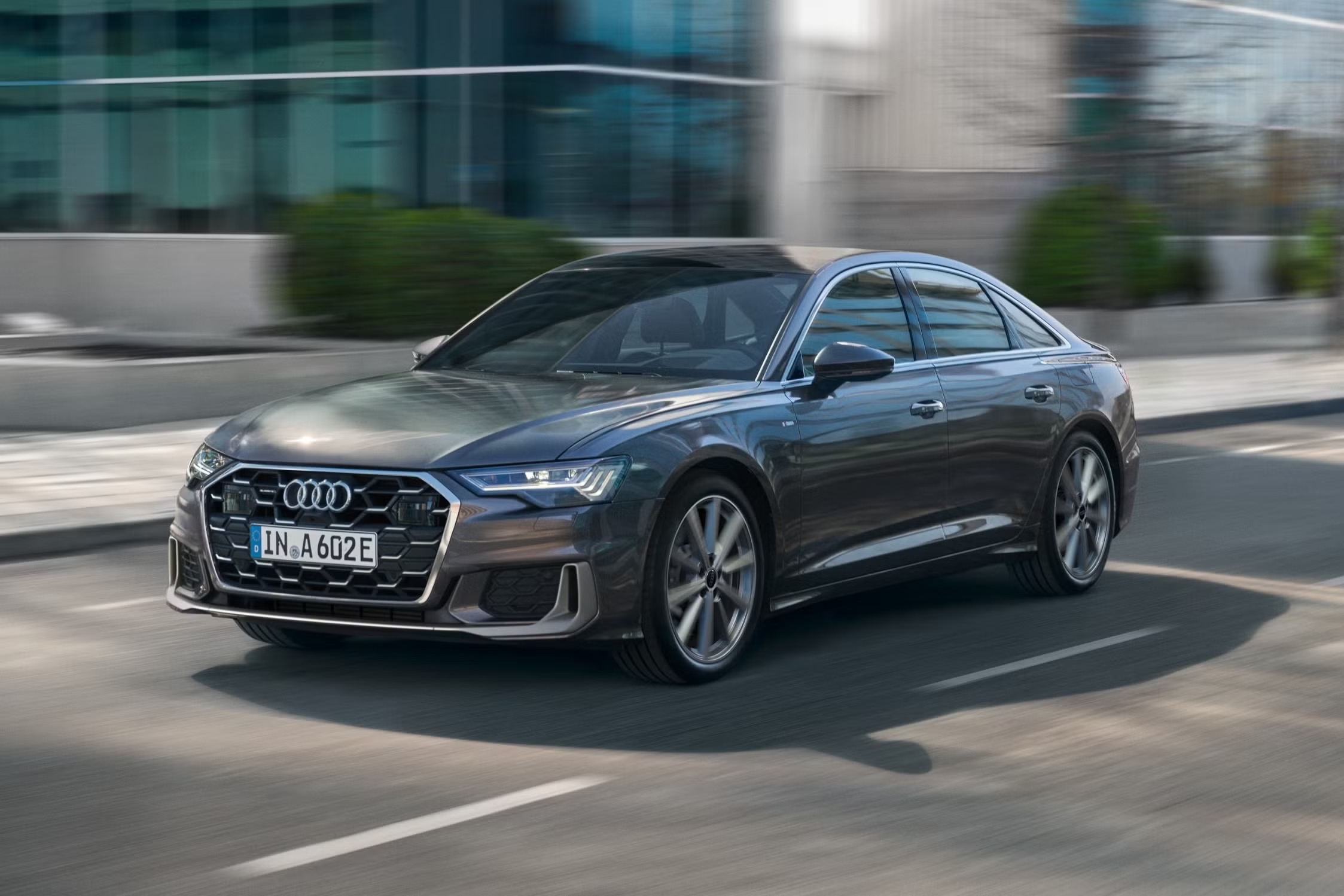For most people, cruising at 80 miles per hour on the highway is just a normal part of long-distance driving. But for car enthusiasts—and anyone who pays attention behind the wheel—it quickly becomes apparent that not all vehicles are created equal when it comes to high-speed stability.
Some cars feel like they were born to live in the left lane. Their steering is precise, their chassis is composed, and they eat up miles with a calm, confident demeanor.
Others? Not so much. Get them past 70 mph, and you start feeling the kind of float, vibration, or wandering that drains confidence and makes every lane change feel like a gamble.
High-speed stability isn’t just about horsepower or tire width. It’s about chassis tuning, suspension geometry, aerodynamics, and steering calibration. It’s about how well a car communicates with the road when wind resistance is high, the pavement gets uneven, and little imperfections start to matter a whole lot more.
A well-sorted car feels like it’s glued to the highway. The best of them almost trick you into thinking you’re going slower than you are. Others constantly remind you that you’re pushing the limits of their comfort zone, and not in a good way.
Interestingly, the difference often has less to do with cost and more to do with engineering intent. Some affordable sedans and compacts feel incredibly sure-footed at speed, and then there are luxury or crossover models that prioritize comfort to a fault, resulting in floaty, unsettled behavior on the highway.
Some automakers tune their vehicles for driver engagement, others for maximum softness. That tuning philosophy is what often determines whether a car inspires confidence or anxiety when it starts moving fast.
In this article, we’re diving into five cars that feel remarkably planted at 80 mph—vehicles that could cruise all day in the fast lane without drama. Then, we’ll look at five that fall short, feeling floaty, vague, or downright sketchy when asked to keep up with modern freeway speeds.
Whether you’re road-tripping, commuting, or just someone who values a composed chassis, understanding how a car behaves at speed is essential, and the differences are more dramatic than you might think.
Also Read: 5 Cars With Back Seats You Can Sleep On and 5 You Can’t
5 Cars That Feel Planted At 80 Mph

1. BMW 3 Series (G20 Generation)
The BMW 3 Series, particularly the latest G20 generation, is a stellar example of how a well-engineered car can feel completely planted at high speeds. This is the car that brings driving enthusiasts back to the brand year after year, and for good reason—its ability to stay composed at 80 mph is a testament to BMW’s meticulous engineering.
With its nearly perfect 50/50 weight distribution and rear-wheel-drive architecture (with optional xDrive all-wheel drive), the 3 Series feels dynamically balanced at any speed. It combines precision with stability, making it one of the most enjoyable cars to drive at freeway speeds.
At 80 mph, the car remains firmly planted. The suspension, with its double-joint spring strut setup up front and multilink rear design, is designed for both comfort and control, absorbing road imperfections without excessive body roll or float. The ride is firm but never harsh, providing excellent feedback while maintaining a smooth, composed demeanor.
This is crucial at higher speeds where body control becomes more important, especially when navigating uneven pavement, potholes, or expansion joints.
In fact, the 3 Series feels like it’s almost glued to the road, even when faced with unpredictable surfaces or the wind’s unpredictable force. When you pass a large truck or get caught in crosswinds, the car doesn’t sway or wander in the lane. Instead, it remains true, instilling a sense of confidence in the driver.
Steering is one of the highlights of the 3 Series, even at highway speeds. BMW has always been praised for its precise, tactile steering, and this generation is no different. At 80 mph, the steering feels direct, offering just enough road feel to maintain a connection to the tarmac without being overbearing.
The car’s responsiveness allows for smooth lane changes with minimal effort, making overtaking other vehicles on the highway feel like a natural, almost effortless maneuver. And even when pushed into sharper maneuvers or during braking, the 3 Series remains calm and composed, never feeling skittish or unsteady. This is a car that simply feels right at speed, not over-engineered to smooth out all character, but engineered to maximize confidence and connection.
Inside, the 3 Series continues to impress with its quiet cabin and luxury-focused details. The noise insulation is superb, and the engine remains barely audible unless you push it into higher revs. On the highway, you’ll find the car is as composed in terms of NVH (Noise, Vibration, and Harshness) as it is in terms of handling.
The seats are supportive, perfect for long-distance driving, while the car’s sophisticated infotainment system ensures the driver stays comfortable and connected without distraction. All in all, the 3 Series combines performance, luxury, and practicality, making it a well-rounded choice for those who regularly find themselves cruising at 80 mph.
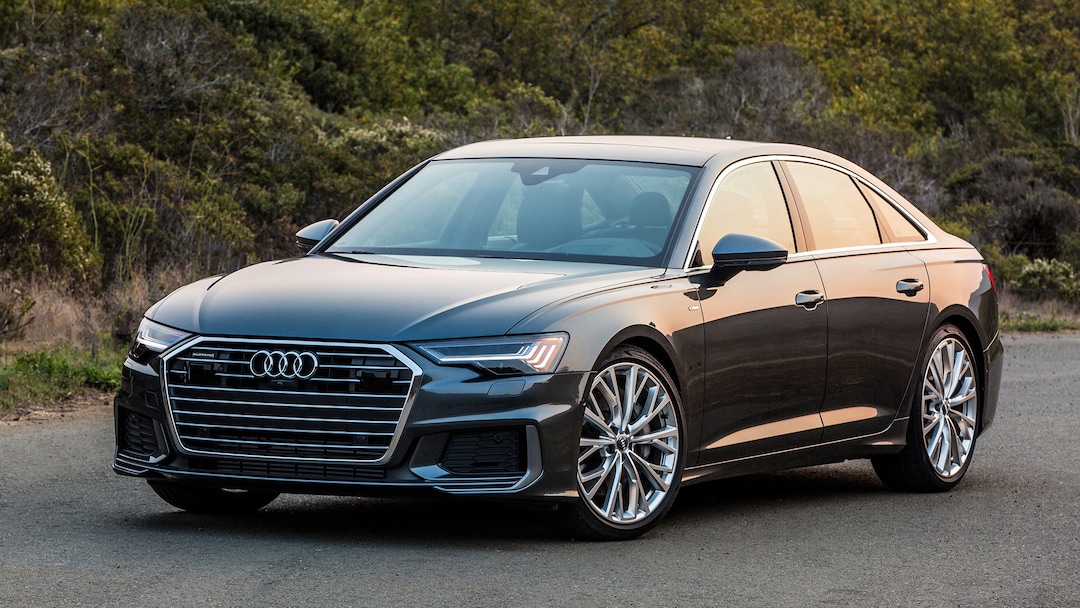
2. Audi A6
When it comes to refined highway cruising, the Audi A6 is one of the best in its class. Audi has long been known for its engineering excellence in terms of ride quality, road manners, and composure. The A6, with its smooth yet powerful performance, is perfectly suited for high-speed driving on highways, offering a calm, collected experience no matter the conditions.
Built on the versatile MLB Evo platform, this executive sedan is long, stable, and perfectly tuned for high-speed highway driving. Its combination of rear-wheel-biased Quattro all-wheel drive and advanced suspension design makes it an absolute joy to pilot at 80 mph.
At this speed, the A6 doesn’t feel rushed or unsettled—it feels like a cruiser, but one with a sharp edge when needed. The adaptive air suspension option on the A6 further improves ride quality at speed, providing a plush, refined experience while keeping the chassis tightly controlled.
Whether you’re gliding over smooth tarmac or dealing with mid-level imperfections, the A6’s suspension soaks it all up without excessive bounce or float. Even at high speeds, you don’t feel the car’s mass; it never gives the sensation of being “floaty,” like other vehicles in its class can at times. Instead, it feels poised, as if it was specifically designed to keep its composure at 80 mph and beyond.
The steering in the A6 is another standout feature. Audi has long been a pioneer in developing electric power steering systems that balance precision with comfort, and the A6 is no exception. While the steering may feel lighter at low speeds, it firms up nicely as you hit highway speeds, offering a direct connection to the road.
When you’re cruising at 80 mph, the steering is wonderfully linear and precise, with just enough feedback to give you confidence in the car’s ability to stay on track, even when crossing lanes or dealing with crosswinds. The A6 is able to maintain its line with minimal input, a reassuring trait that makes overtaking and merging onto faster lanes feel effortless.
Inside, the cabin is another reason why the A6 excels at high-speed travel. It’s incredibly quiet—Audi has mastered the art of soundproofing, and the result is a serene driving experience. At 80 mph, the wind noise is almost imperceptible, and the road noise is significantly reduced.
This allows for a more peaceful journey, whether you’re traveling for business or simply enjoying a road trip. The seats are exceptionally comfortable and offer excellent support for long drives, ensuring that you feel fresh even after hours behind the wheel. With its high-end materials, premium build quality, and excellent driving dynamics, the Audi A6 ensures that high-speed driving is both comfortable and engaging.

3. Tesla Model 3
The Tesla Model 3 has become a benchmark for electric vehicles in terms of performance and driving dynamics, and it’s no surprise that it feels incredibly composed at 80 mph. One of the Model 3’s strongest features is its low center of gravity, thanks to the placement of its heavy battery pack under the floor.
This gives the car exceptional balance and stability, particularly at higher speeds. While many electric vehicles tend to feel a bit too soft and disconnected at speed, the Model 3 feels planted and solid, even when cruising on highways at 80 mph.
The Model 3’s air suspension (available in the Performance and Long Range trims) is particularly adept at controlling body motions, ensuring that the car remains flat and composed when faced with highway bumps or rough road surfaces. Unlike many other cars, where you feel a lot of vertical motion or the car’s body pitching forward or back, the Model 3 feels stable and tight.
It stays glued to the road, even when you’re merging onto a busy freeway or negotiating a curve at speed. This solid foundation not only makes it fun to drive but also ensures that the car remains confident in crosswinds, so you’re not constantly correcting your steering. Tesla’s dynamic stability control helps keep the car’s ride controlled, providing that extra sense of security at high speeds.
Steering feedback is also noteworthy in the Model 3. It’s surprisingly responsive for an electric vehicle, providing you with precise input at highway speeds. The steering wheel’s light feel, while still responsive, allows you to make lane changes without unnecessary effort, and the car feels quick to react when you need it to.
There’s a subtle, almost imperceptible hum of the electric motors at high speed, but the driving experience is eerily calm and composed, as the Model 3 effortlessly cuts through the air. This quiet ride, combined with an incredibly responsive drivetrain, means that the Model 3 can maintain its momentum on the highway with ease. It’s a great example of how electric vehicles can not only excel in acceleration but also at maintaining stability on long stretches of highway.
While the performance of the Model 3 at speed is already impressive, it’s the refinement that truly stands out. At 80 mph, it feels like a well-sorted luxury sedan, and the cabin remains impressively quiet, thanks to Tesla’s noise reduction efforts.
Despite its sporty credentials, the car doesn’t feel harsh or overly stiff; rather, it delivers a balanced, comfortable ride that makes it feel like it was designed for cruising at higher speeds. It’s an electric car that perfectly blends performance, comfort, and stability, making it an ideal choice for anyone looking to travel long distances at speed in an EV.
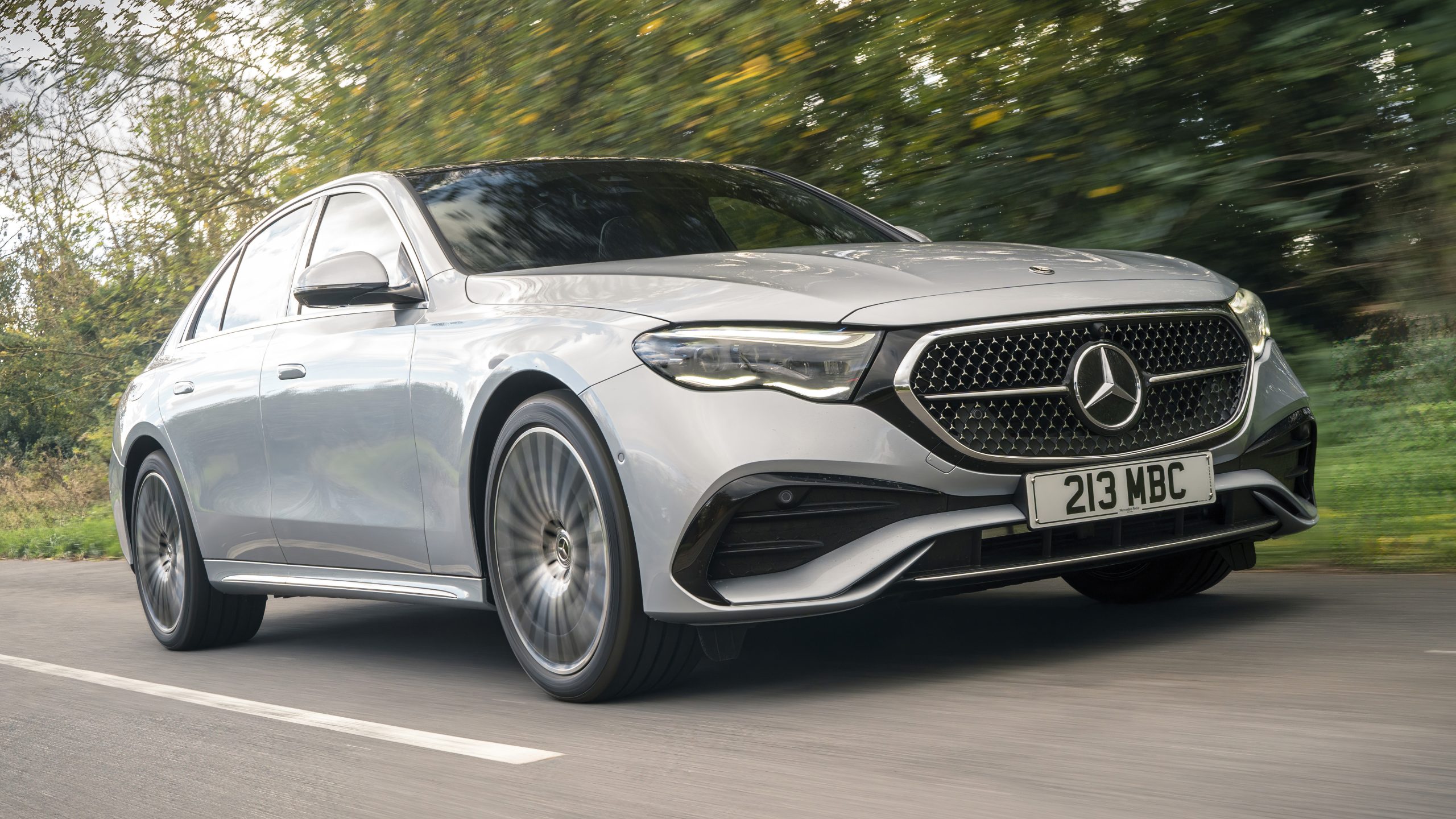
4. Mercedes-Benz E-Class (W213)
The Mercedes-Benz E-Class has long been a staple of luxury motoring, and its current W213 generation takes this heritage to new heights, particularly in terms of high-speed stability. Designed for long-distance cruising, the E-Class feels right at home at 80 mph, offering a refined, composed ride that easily competes with the best in the business.
Mercedes has incorporated advanced suspension technologies, including an optional Air Body Control air suspension system, which allows the E-Class to glide over highway imperfections while keeping the car’s body perfectly level. This system, combined with the car’s larger wheelbase, makes it an excellent choice for those who spend long hours on the highway.
At high speeds, the E-Class feels stable and planted, never getting nervous or unsettled. Whether you’re driving on smooth highways or dealing with mid-range road imperfections, the car absorbs bumps effortlessly, thanks to its adjustable suspension settings.
The balance between comfort and control is something Mercedes has perfected in the E-Class, and the result is a vehicle that feels surefooted even in challenging driving conditions. At 80 mph, the E-Class remains composed and confident, and even crosswinds don’t throw it off course. The car’s handling is smooth and steady, offering the kind of confidence that comes with decades of engineering excellence. It’s a vehicle that encourages you to keep driving for hours without feeling fatigued, thanks to its well-controlled ride.
The steering in the E-Class is another key element in making it feel so composed at speed. The steering ratio is just right—responsive enough to provide good feedback without being twitchy or over-correcting. At 80 mph, the steering feels perfectly weighted, offering an easy but direct connection to the road.
This ensures that the car stays on course even during high-speed lane changes. It doesn’t require much effort to steer, and the precision gives you a sense of control even when the car is traveling at high speeds. For those who value comfort and refinement without sacrificing stability and handling, the Mercedes-Benz E-Class is a perfect balance of both.
Inside, the E-Class sets the standard for luxury. The cabin is quiet, the seats are plush, and the ride is smooth, making long journeys feel effortless. The car’s design is focused on the driver’s comfort, with a tech-laden infotainment system that provides a wealth of information and entertainment without distracting the driver.
Whether you’re listening to music or navigating unfamiliar roads, the E-Class ensures that you stay connected and relaxed. All of this combines to make the E-Class an excellent choice for highway driving, offering a sense of calm and luxury, even at 80 mph and beyond.

5. Volvo S60/V60 (Polestar Engineered or AWD Trims)
Volvo has built a reputation for creating cars that offer a refined and calm driving experience, and the S60/V60—especially in Polestar Engineered and AWD trims—are prime examples of this philosophy. These cars have a distinctive ability to feel planted on the highway, offering an excellent combination of performance, comfort, and stability.
Volvo’s focus on safety and structural integrity gives the S60/V60 a robust and controlled demeanor, even when traveling at 80 mph on the highway. The adaptive suspension and well-sorted chassis keep the car’s body movements in check, offering a composed ride even on rough or uneven pavement.
When you’re driving at high speeds, the S60 and V60 exhibit a solid connection to the road. The cars feel incredibly balanced, with minimal body roll or float, even when dealing with crosswinds or abrupt lane changes. Volvo’s all-wheel-drive system adds another layer of confidence, ensuring that the car stays planted, no matter the weather conditions.
Whether you’re taking a sharp curve or cruising straight down a long highway, the car feels planted and responsive. The steering is also precise, offering just enough feedback without being overly heavy, so you can confidently adjust your direction with minimal effort. This makes high-speed cruising a stress-free experience, allowing you to focus on the road ahead instead of the car’s behavior.
Inside, Volvo continues its tradition of building high-quality, comfortable interiors. The cabin is quiet, with excellent sound insulation that keeps the noise from the road and wind at bay. The seats are comfortable, offering support that’s perfect for long-distance driving.
The minimalistic Scandinavian design adds to the serene atmosphere, making the car feel like a sanctuary on wheels. Whether you’re driving for an hour or several, the Volvo S60/V60 ensures that the drive remains smooth and controlled, with every detail contributing to a sense of calm and confidence at speed.
5 Cars That Float or Wobble at 80 MPH
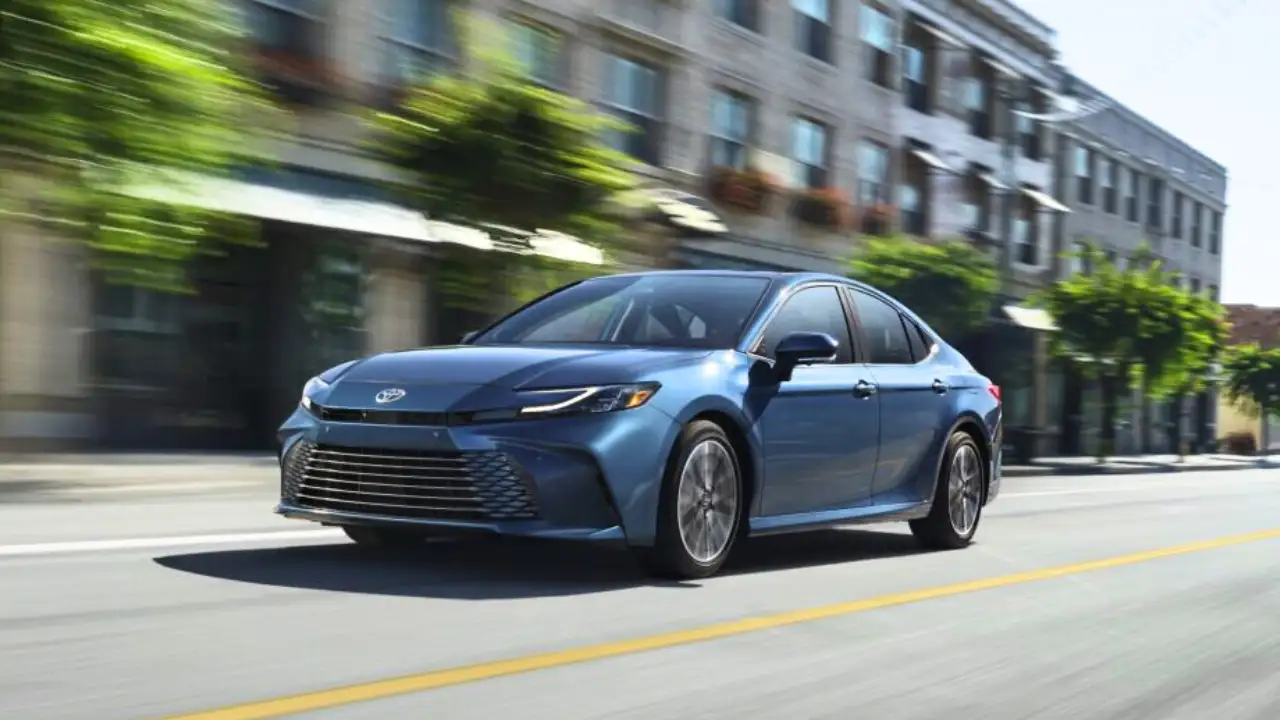
1. Toyota Camry (Non-TRD Trims)
The Toyota Camry has long been a favorite among those who prioritize comfort, reliability, and everyday practicality over driving excitement. However, when it comes to high-speed stability, the non-TRD trims of the Camry tend to leave something to be desired.
While the Camry is an excellent commuter car and is perfectly fine for city driving, it begins to reveal its weaknesses at speeds over 70 mph.
At 80 mph, the car can feel disjointed and slightly floaty, especially in its softer, non-sporty trims like the LE or XLE. Its suspension, which is tuned more for comfort than precision, allows the car to move more than you’d expect when driving on highways.
At higher speeds, the body of the Camry becomes more susceptible to side-to-side motion. The steering feels light and a bit disconnected, making lane changes feel less precise and more like a gentle drift. This lack of direct communication between the steering and the road results in the car feeling unstable when you encounter crosswinds or when passing large trucks on the highway.
The car doesn’t feel like it’s stuck to the road; instead, you constantly find yourself making small corrections to stay in your lane, and there’s an unsettling sense of vagueness in the way the car responds. It’s not dangerous, but it’s far from the composed, confident feeling you get from other cars in its class.
The suspension is another area where the Camry falters at speed. While it’s great for soaking up city potholes and imperfections, it struggles to maintain control when driving at 80 mph.
On the highway, the car’s soft suspension causes it to bounce and sway more than expected, particularly when navigating over uneven surfaces or when driving through dips.
These vertical movements give the car a sense of floatiness and a lack of confidence, making the driver feel as though the car is struggling to stay grounded.
While it might be comfortable for short trips, the Camry quickly becomes tiresome and frustrating on long highway stretches, as the car’s instability at high speeds requires constant corrections. This makes it less ideal for highway cruising, especially when compared to competitors that handle better at speed.
Although Toyota has made strides to improve the driving experience in more recent Camrys, the lack of precision and firmness at 80 mph is a reminder that the car wasn’t engineered to offer a dynamic highway experience.
Even the inclusion of a more refined interior and advanced tech doesn’t make up for the driving dynamics, as the car feels out of its depth when pushed on highways. For those looking for comfort over high-speed stability, the Camry will still do the job, but if you value driving control at highway speeds, it’s better to look elsewhere.

2. Jeep Compass
The Jeep Compass is marketed as a small SUV with a rugged edge, offering a bit of off-road capability alongside its daily-driving credentials. Unfortunately, when it comes to highway driving, particularly at speeds of 80 mph, the Compass reveals some significant weaknesses.
Its tall, boxy shape and suspension setup optimized more for comfort and off-road flexibility than high-speed stability make it feel floaty and unrefined on highways. While the Compass may be able to navigate rougher roads and trails with ease, it struggles to maintain composure when traveling at freeway speeds.
At 80 mph, the Compass feels unnervingly unstable. The suspension, which is designed to absorb larger impacts, doesn’t do a great job of keeping the vehicle steady at high speeds. The car’s taller ride height and softer suspension contribute to a feeling of floatiness, especially when cruising over uneven surfaces or encountering crosswinds.
The body tends to sway, making lane changes feel more like a suggestion than a precise maneuver. When overtaking larger vehicles, the Compass can feel as if it’s being pushed around by the air turbulence, which causes a sense of unease in the driver.
The steering is vague, requiring constant small adjustments to keep the car on course. At times, it even feels like the vehicle is being blown off course, making long highway drives exhausting and mentally taxing.
Crosswinds and larger vehicles on the road only exacerbate the Compass’ instability. A gust of wind or a passing truck can make the Compass feel like it’s about to lose its footing, and the suspension doesn’t do enough to counteract the body roll and side-to-side sway.
The vague steering only adds to this, as it doesn’t provide enough feedback to reassure the driver when things start to feel out of control. Unlike vehicles that have a lower center of gravity or more sophisticated suspension systems, the Compass remains more prone to wobbling and less predictable when navigating challenging conditions.
Furthermore, the interior experience does little to mitigate these issues. The cabin, while relatively quiet and well-equipped for its price point, doesn’t have the level of insulation needed to block out the wind and road noise generated at higher speeds.
This makes the drive feel even less stable and more fatiguing over long distances. While the Compass is a capable off-roader, its dynamics at highway speeds leave much to be desired, making it a poor choice for anyone planning to travel long distances on the highway at speeds over 70 mph.
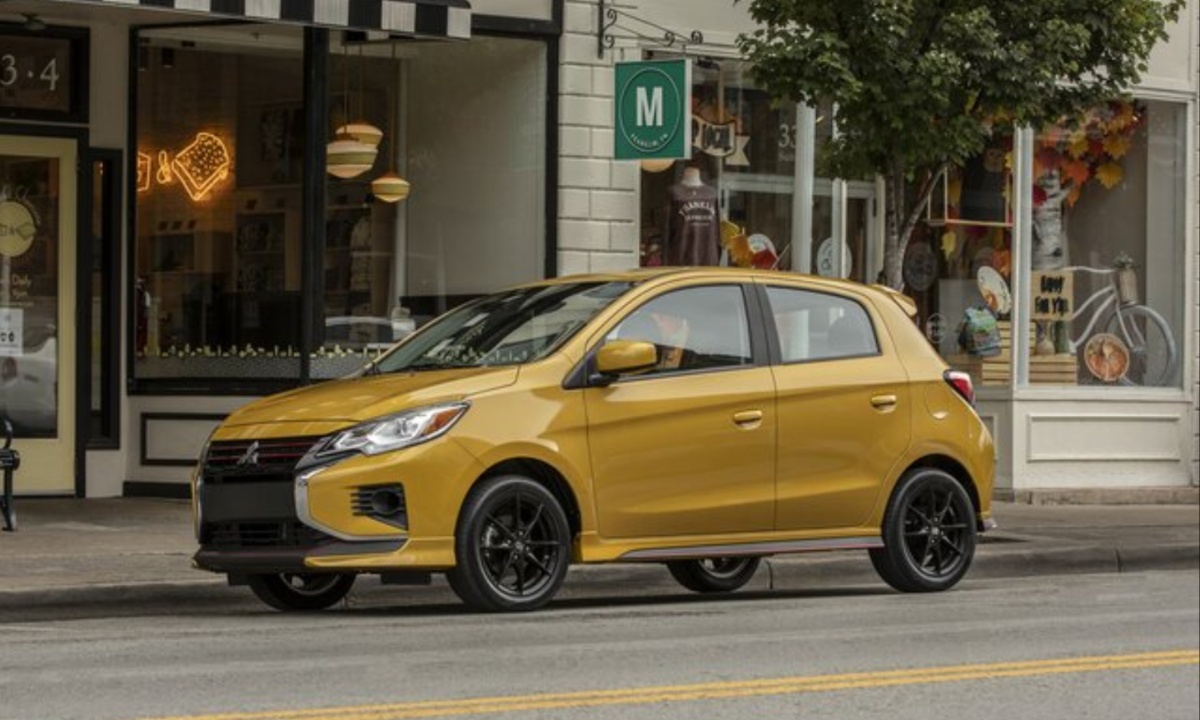
3. Mitsubishi Mirage
The Mitsubishi Mirage has a reputation for being one of the most affordable cars on the market, and it serves as an efficient city commuter with impressive fuel economy.
However, when it comes to highway stability, especially at speeds of 80 mph, the Mirage leaves a lot to be desired. Its tiny footprint, lightweight structure, and soft suspension make it incredibly susceptible to instability at higher speeds, giving it a floaty and jittery feeling on the freeway. If you’re looking for a car that feels solid at 80 mph, the Mirage certainly isn’t it.
The Mirage’s suspension is tuned more for comfort in city driving, which leads to a soft and bouncy ride at higher speeds. When traveling at 80 mph, the suspension has a hard time controlling the car’s vertical movements, causing it to bounce and float over every imperfection in the road.
While this might not be a huge issue for lower-speed city driving, at 80 mph, it becomes both annoying and a little unsettling. Every bump or expansion joint sends a shiver through the car, and the body sways more than you’d expect from a small car. At times, the feeling can be disorienting, as the car never feels fully in control, leaving the driver constantly adjusting their grip and steering inputs.
The steering in the Mirage is also part of the issue. It’s overly light and lacks precision, particularly at higher speeds. Lane changes and overtakes require a lot more effort than you might expect, and the steering doesn’t offer much feedback about what’s happening on the road.
This lack of communication between the driver and the road can make the car feel unresponsive and disconnected, and it only gets worse as speed increases. At 80 mph, the Mirage feels like it’s floating on air, with the steering wheel offering little more than vague direction without a strong connection to the road.
On top of all of that, the Mirage’s interior contributes to the lack of stability. The cabin is noisy, with road and wind noise seeping in as the car speeds up. This, combined with the bouncy ride, can make an 80 mph drive feel exhausting, especially over long distances.
While it may be a cheap and cheerful car for running errands, the Mirage is not built for high-speed cruising, and it’s easy to see why it struggles to keep its composure on highways. It simply lacks the necessary engineering to feel confident and planted at highway speeds.
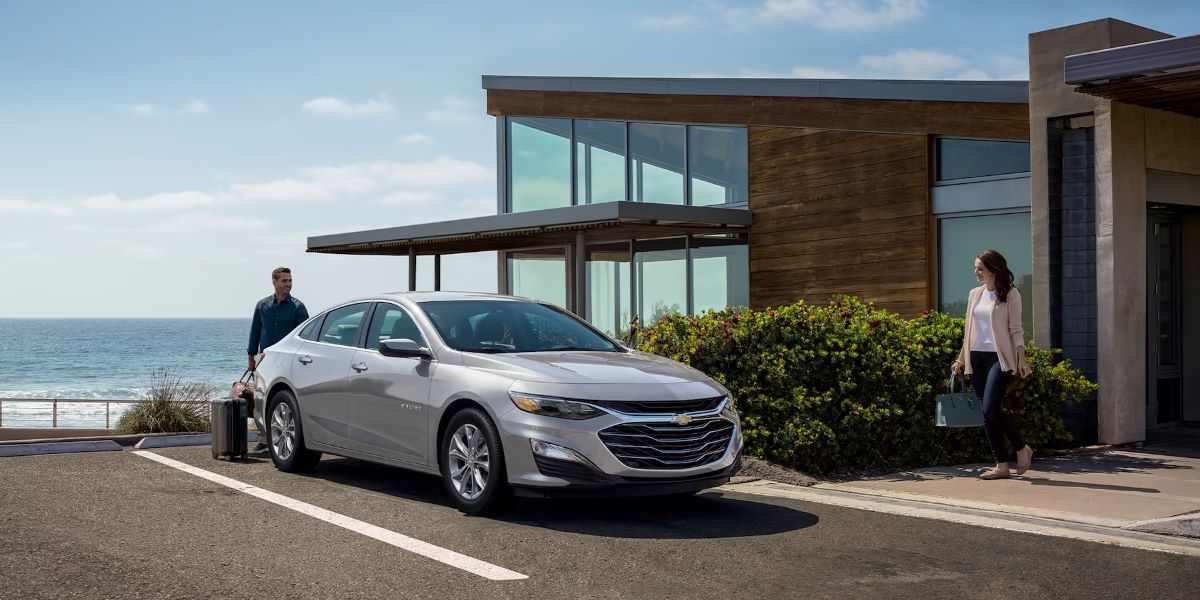
4. Chevrolet Malibu (Base Trims)
The Chevrolet Malibu is a popular midsize sedan that offers good value and a smooth, comfortable ride for everyday driving. However, when it comes to maintaining stability at high speeds, particularly 80 mph, the Malibu’s softer suspension and light steering result in a noticeable lack of control and composure.
While the Malibu performs well under normal conditions, its performance diminishes significantly once you push it past a certain speed. Its suspension is tuned more for comfort, and this results in a floaty, less controlled feeling at higher speeds.
The suspension in base trims of the Malibu doesn’t provide the necessary support to keep the car stable at highway speeds. At 80 mph, the car feels a bit disconnected, as if it’s being tossed around by the wind or uneven road surfaces. Bumps, dips, and expansion joints create noticeable body movement, leading to a ride that feels bouncy and unsettled.
While the Malibu’s suspension excels in offering comfort around town, at 80 mph, it begins to feel out of its depth, especially when you’re driving on highways with uneven surfaces or during windy conditions. The car’s suspension just can’t maintain a smooth, consistent ride at these speeds, making the driving experience less enjoyable.
The steering in the Malibu also contributes to this feeling of floatiness. At highway speeds, the steering feels overly light and lacks the precision needed to keep the car firmly planted. This light steering requires constant adjustments, as it doesn’t provide enough feedback to ensure you stay centered in your lane, especially when overtaking other vehicles.
The combination of the soft suspension and vague steering results in a vehicle that feels less stable and more difficult to control at higher speeds. This isn’t a car that offers the reassuring confidence that other competitors in its class can provide at 80 mph.
In addition to the lack of steering precision and suspension issues, the Malibu’s interior doesn’t offer much help in creating a stable environment. The cabin, while comfortable at lower speeds, becomes noisy at higher speeds, with wind and road noise creeping in as the car travels faster.
The lack of soundproofing at higher speeds only adds to the feeling of instability. For those looking for a car that feels confident at 80 mph, the Malibu’s base trims leave much to be desired. It’s a car that’s more comfortable than it is composed, and that’s fine for around-town driving—but not ideal for high-speed cruising.
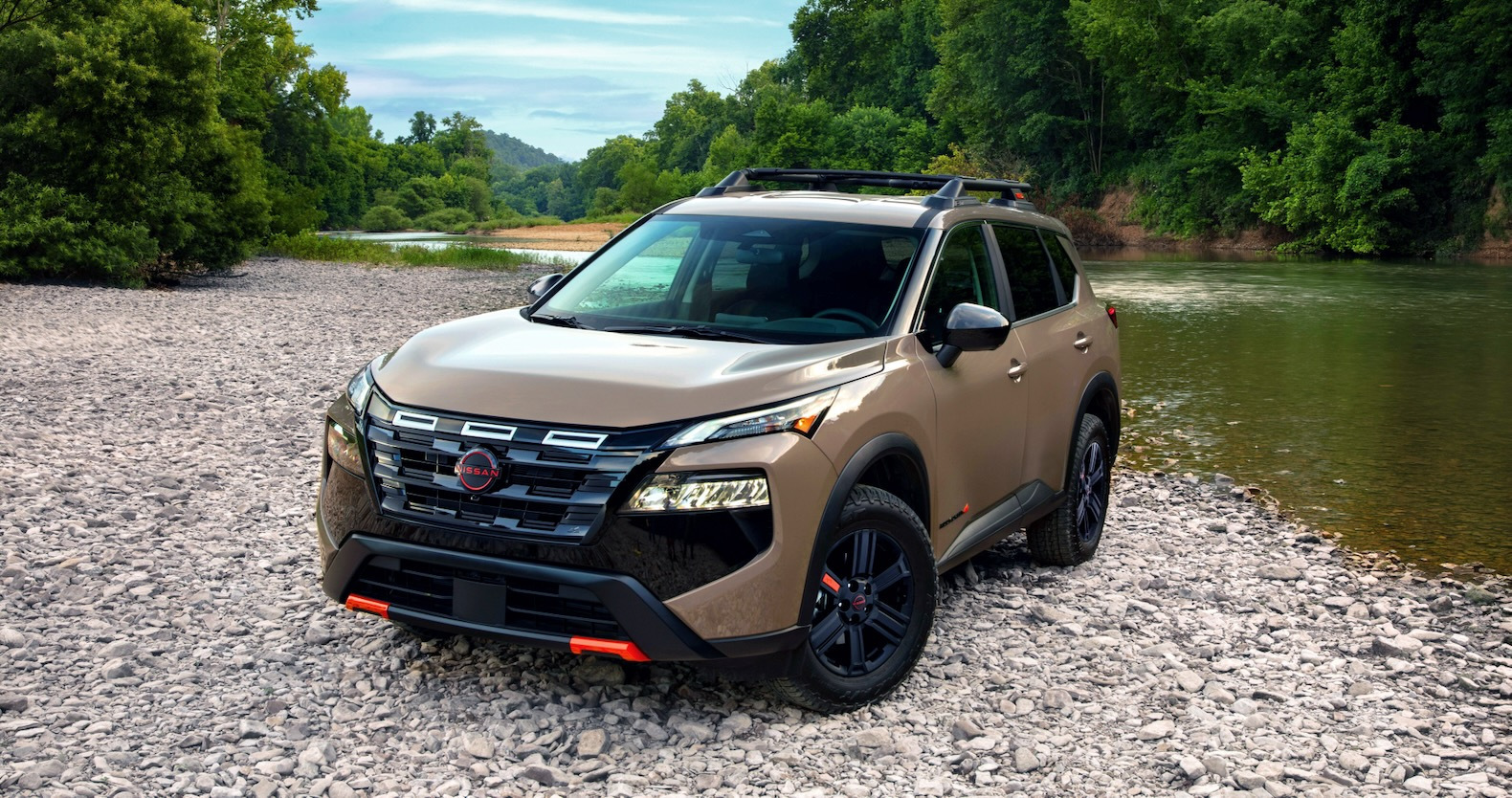
5. Nissan Rogue
The Nissan Rogue is a compact crossover that’s designed to be family-friendly, with plenty of interior space and a smooth, comfortable ride. However, when it comes to highway stability, particularly at speeds of 80 mph, the Rogue’s soft suspension and tall body make it feel unstable and wobbly. The Rogue isn’t a sports car, but at high speeds, its lack of precision becomes apparent. When you push it to 80 mph on the highway, you can feel it struggling to maintain composure.
The suspension is one of the Rogue’s weak points at high speeds. While it’s perfectly fine for low-speed cruising or city driving, it struggles to provide the necessary control when traveling at higher speeds. When encountering bumps or road imperfections, the Rogue’s suspension allows more body movement than desired, creating a floaty, unsettled feeling.
Even slight changes in the road surface seem to have a larger-than-expected impact on the car’s stability, resulting in a ride that feels bouncy and imprecise. The tall stance of the Rogue further exacerbates this issue, as the car’s higher center of gravity makes it more susceptible to body roll and sway.
In addition, the steering on the Rogue feels loose and uncommunicative at highway speeds. At 80 mph, it lacks the precision required to stay centered in your lane without constant corrections. The car drifts slightly and feels disconnected from the road, making highway driving feel more tiring than it should. While it’s fine for short trips or lower-speed driving, at high speeds, the Rogue just doesn’t inspire confidence. It’s a car that’s comfortable at a cruise but doesn’t excel at handling demanding freeway conditions.
Finally, the Rogue’s interior doesn’t help offset these issues either. Road noise is more noticeable than in other vehicles, especially as the speed increases. The cabin feels more exposed to the elements, and the added noise and movement contribute to the sense that the car is struggling to maintain stability. While the Rogue is a good car for commuting and weekend errands, it doesn’t provide the level of stability and comfort required for high-speed freeway cruising.
Also Read: 7 SUVs That Allow Full-Height Box Loading With Ample Cargo Space
Highway driving may seem like the easiest kind of driving—but anyone who’s done hundreds of miles at a stretch knows that not all vehicles handle it the same way. Some cars—whether they’re luxury sedans, sporty compacts, or thoughtfully designed crossovers—feel planted.
They stay composed, absorb imperfections, resist crosswinds, and steer true with minimal effort. These are the vehicles that make long drives enjoyable and less fatiguing, letting the driver settle into a rhythm without constantly fighting the road.
On the other hand, cars that float, wobble, or feel vague at speed quickly reveal their compromises. Whether it’s soft suspension tuning, poor aerodynamics, or loose steering, these vehicles drain confidence and increase fatigue.
You’re constantly adjusting, correcting, and reacting—and that mental workload adds up fast. It’s not just about comfort; it’s about trust. You want to know that your car will behave predictably at 80 mph, not turn into a wobbly mess the moment you pass a semi or hit an expansion joint.
Interestingly, the difference isn’t always about price. Some of the most stable cars at speed are compact sedans or wagons engineered with care and attention.
Likewise, some high-end vehicles disappoint because they chase softness or off-road credentials rather than on-road finesse. The key takeaway? It’s all about intent. Cars designed with highway stability as a priority will shine when pushed, while those tuned only for comfort or budget compromise will expose their flaws at speed.
Ultimately, high-speed confidence is one of those things that separates a decent car from a truly great one. It’s not something that shows up on spec sheets or in dealership test drives—but it’s something you feel, mile after mile. If you value calm, control, and that almost telepathic sense of connection between car and driver, choose wisely. Because when you’re rolling at 80 mph with hours to go, the right car makes all the difference.

